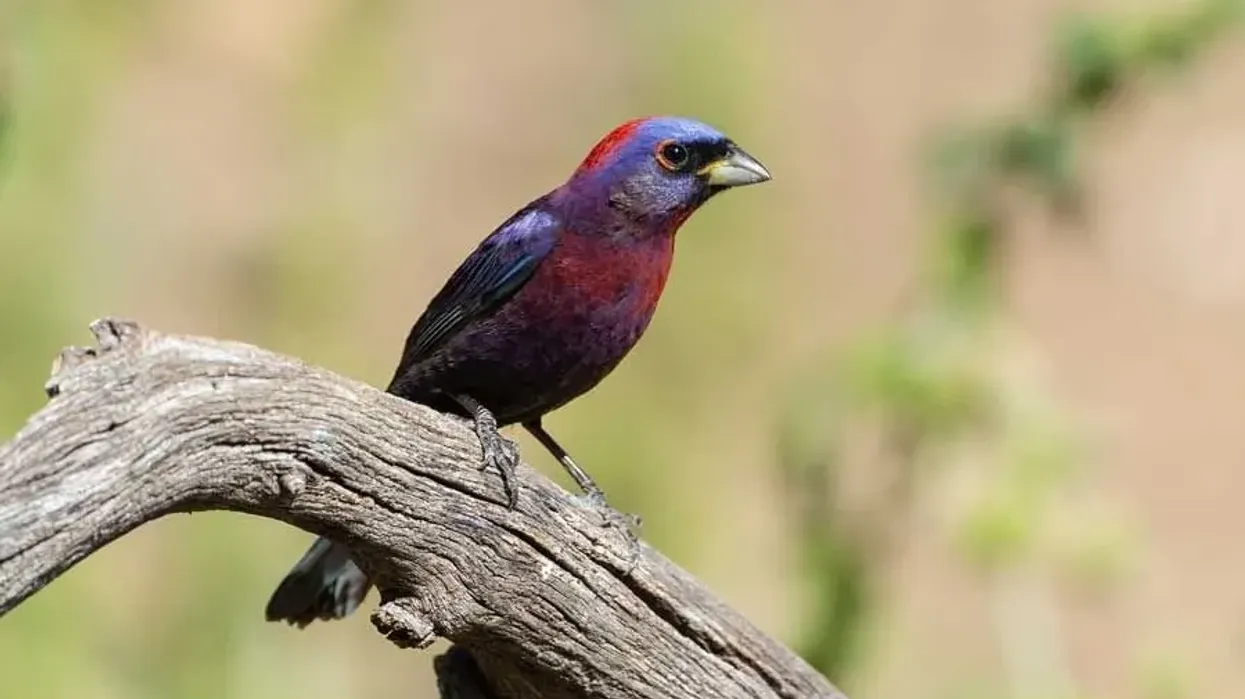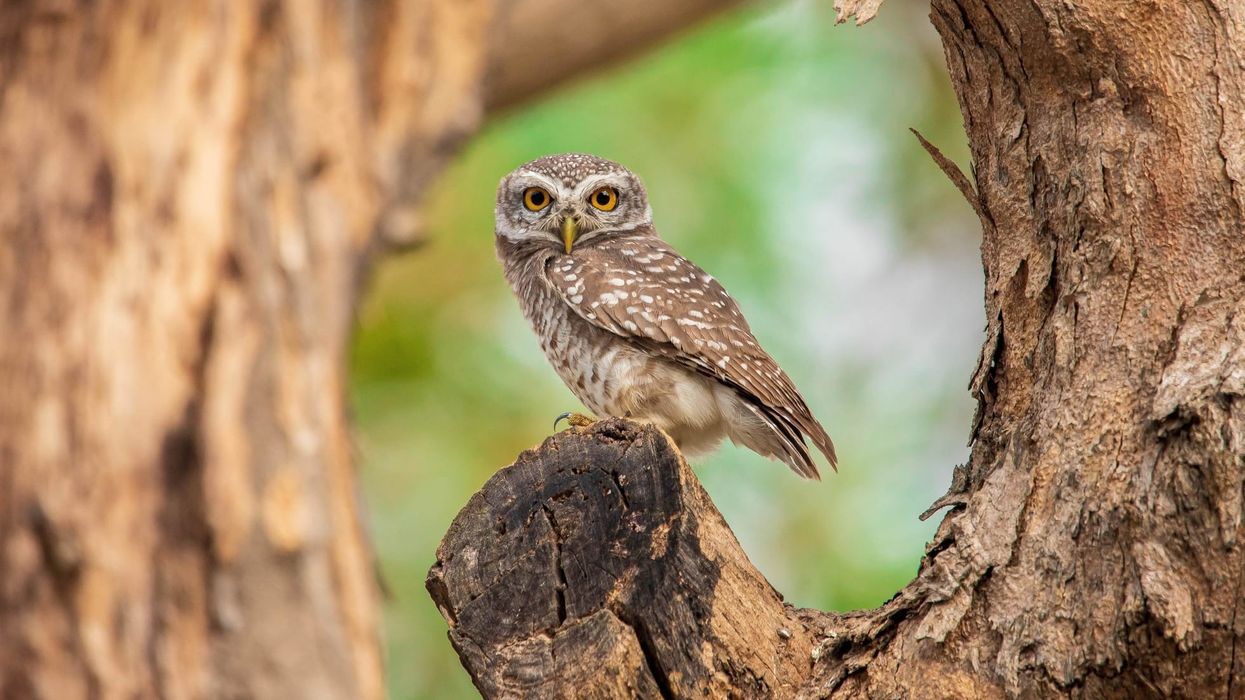A varied bunting (Passerina genus) is a small songbird that belongs to the Passeriformes order of the cardinal bird family. They usually prefer thorny and dense habitats. These birds are not shy in nature and can be seen in their range abundantly.
These beautiful birds do not like populated areas. They are gorgeous and unique in their appearance.
They are widely seen across Texas in the United States and can especially be called the birds of North America. Buntings’ song is loud enough to be heard from a distance. They have some special characteristics that will make you more curious.
This bird species can be found flying from near sea level to almost 4000 ft (1220 m) elevation. Wish to know more about it? Here are some fun, engaging, and interesting facts on varied bunting birds.
After this, please also take a look at budgerigar facts and bee hummingbird facts to learn more about these beautiful creatures that inhabit our world.
Varied Bunting Interesting Facts
What type of animal is a varied bunting?
A varied bunting male, Passerina Versicolor, is a small songbird that belongs to the Passeriformes order of the cardinal bird family. They are widely spread across the United States. They are gorgeous and beautiful birds.
Male varied bunting is more colorful than the females. Their purple and red color makes it unique in its appearance. They are the birds of North America.
What class of animal does a varied bunting belong to?
A varied bunting (Passerina Versicolor) is a small songbird that belongs to the class Aves. Varied bunting comes under the Passeriformes order of the Cardinalidae family. Its scientific name is Passerina versicolor. There are other types like Leucistic Varied bunting, Hybrid Painted varied bunting, and so on. They are migratory birds.
How many varied buntings are there in the world?
There is no accurate and rough estimate of the total number of varied bunting in the world. They have a stable population in the southwestern United States even though there is a loss of habitat. Their population is stable and slightly increasing.
Where does a varied bunting live?
Varied buntings live in dense thorny bushes of the United States. They are found in the range of New Mexico, southern parts of Arizona, and Texas. During the winter, they go to Mexico and come back to the United States during summer.
What is a varied bunting's habitat?
Varied buntings prefer to live in thorny brush thickets, thorn forests, shrubby woodlands, and deserts. They prefer to live in dense habitats. Their primary habitat is usually canyons. They are also seen in overgrown clearings and xeric shrublands. These birds mostly try to avoid densely populated areas.
Who do varied buntings live with?
Varied buntings are seen alone as well as in small groups. These birds forage alone in the summer season and in small flocks during the winter season.
How long does a varied bunting live?
A varied bunting has an average lifespan of around 10 years. It may vary depending upon their diet and habitat.
How do they reproduce?
A female varied bunting species lays around two to three white to bluish-white eggs in the nest. They are incubated by the female species for 12-13 days. Hatchlings are fully feathered within 10 breeding range days and leave the nest by 12 days.
For 12 days, these hatchlings are fed by both parents. The parents are separated after a few days of fledgling, where the males take care of the young ones and females try to build another nest. These species only brood twice or a maximum of thrice.
What is their conservation status?
A varied bunting species range is listed as Least Concern species by the IUCN Red List and National Audubon society. They are common species identification in the range of southwestern United States even though there is habitat loss.
Their population is decreasing in the Mexico range due to the overgrazing and degrading of their habitat. These species do not face any extinction threat.
Varied Bunting Fun Facts
What does a varied bunting look like?

Varied bunting species is a small songbird that belongs to the Passeriformes order. These species are gorgeous and beautiful birds known for their rich plum color. Male species are more colorful than female species.
A male species has a mix of red and purple colors on the body. These species have a violet-blue face with purple cheeks and blue foreheads. Their rump and shoulders are violet-blue and have a crimson eye ring or arc and hind crown.
There is a blackish color around the bill nest site. Female species are just plain brown in color and have very few markings on the wings. They have plain wings and a belly and have a greyish buff below.
How cute are they?
Varied bunting purple birds are gorgeous and colorful birds with loud voices. Their spectacular color pattern is really beautiful. They are cute and innocent in their appearance.
How do they communicate?
Varied buntings use sound for communicating with each other. They sing sweet songs that are melodious and loud for communicating with their other members. A low, loud warble is a signature of these birds. These birds are quite loud when communicating with others through their song.
How big is a varied bunting?
Varied bunting range has a length of 4.3-5.5 in (11-14 cm) and has a wingspan of 8.3 in (21 cm). Hence it is a small-sized bird but is much bigger than a hummingbird.
How fast can a varied bunting fly?
Varied buntings can fly at an average speed of 20 mph (32 kph). They fly at a decent speed and usually do not fly very fast.
How much does a varied bunting weigh?
On an average scale, an adult varied bunting weighs around 0.4-0.5 oz (11-13 g). This may vary slightly depending on their habitat and feeding habits.
What are the male and female names of the species?
As a varied bunting is a songbird, its species is P. Versicolor. A male varied bunting is called a cock, and a female varied bunting is called a hen.
What would you call a baby varied bunting?
A baby varied bunting is called a hatchling.
What do they eat?
Varied buntings are omnivores. Their feeding habits are not very known and likely to be small insects, fruits, and berries. Main predators of varied bunting include large birds, raccoons, red foxes, and so on.
Are they poisonous?
Varied buntings are not poisonous. Bunting does not pose any threat to others.
Would they make a good pet?
Varied buntings may not be kept as pets in the United States. They are migratory birds and are not suitable for keeping as pets.
Did you know...
Varied bunting learns to sing songs after they hatch. They share similar syllables and make up a single neighborhood.
Hybrid Painted varied buntings are the birds that are cross of painted buntings and varied buntings.
The snow bunting is the most colorful bunting species.
One of the rarest buntings to spot in urban areas is the indigo bunting.
Is a bunting a finch?
No, they are not finches. A bunting has a similarity to finch but not the same. Both of them are seed-eating birds. The bill of a bunting is stubby and conical, whereas the bill of a finch is stout and conical.
How high can they fly?
These birds are known to be excellent fliers, but there is no concrete information available regarding the altitude they can reach in their flight.
Here at Kidadl, we have carefully created lots of interesting family-friendly animal facts for everyone to discover! Learn more about some other birds from our least tern facts and song thrush facts pages.
You can even occupy yourself at home by coloring in one of our free printable varied bunting coloring pages.








